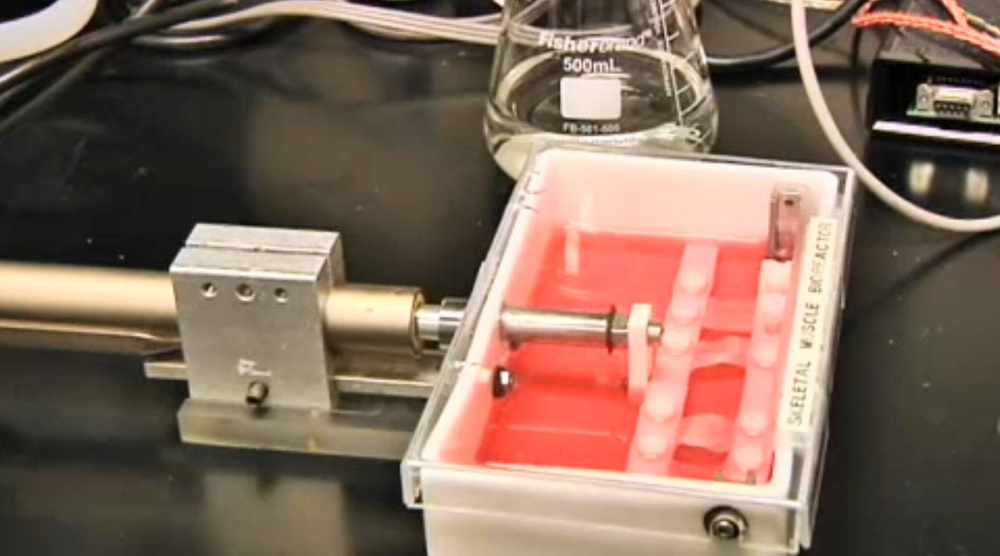Lab-Engineered Muscle Implants Prove Effective In Restoring Function To Animals

Researchers from the Wake Forest Baptist Medical Center have reported in the latest issue of Tissue Engineering Part A how laboratory-developed muscle tissue can significantly aid muscle regeneration and greatly improve function when implanted back into test subjects.
Performing tests on lab rodents, the researchers obtained small samples of muscle tissue from rats and mice and multiplied the cells by placing onto strips of a mouse-compatible biological material derived from pig bladder. The muscle strips were later “educated” on how to perform in the body using a computer-controlled device to expand and contract the strips at a rate of three times a minute for the first five minutes of each hour for about a week.
 In later implanting the strips into the mice that had half of the muscle in their back previously removed, and in further comparing ‘exercised’ implants with their non-exercised counterparts, the researchers found a positive correlation between exercising the implant before implantation and accelerated muscle development and improved function; while results also demonstrated how the functional recovery period for those implanted with the exercised implant was more extensive and prolonged. Further still, the researchers positively identified that new muscle tissue developed both within the implant itself, as well as where the implanted tissue and ‘native’ tissue met, suggesting the implant was successful in accelerating the body's natural healing response.
In later implanting the strips into the mice that had half of the muscle in their back previously removed, and in further comparing ‘exercised’ implants with their non-exercised counterparts, the researchers found a positive correlation between exercising the implant before implantation and accelerated muscle development and improved function; while results also demonstrated how the functional recovery period for those implanted with the exercised implant was more extensive and prolonged. Further still, the researchers positively identified that new muscle tissue developed both within the implant itself, as well as where the implanted tissue and ‘native’ tissue met, suggesting the implant was successful in accelerating the body's natural healing response.
Though the researchers hope the findings will eventually pave the way in building muscle-like implants in the lab in order to treat head and facial injuries, whether from injury or disease, the Wake Forest team will first test the method in humans with muscle defects such as cleft lip and palate. Further into the future still, Wake Forest admits its ultimate goal would be in combining lab-engineered bone, skin and nerve with the muscle implants to create a true “composite” tissue.
Source: News Wise
Richard Birkett

